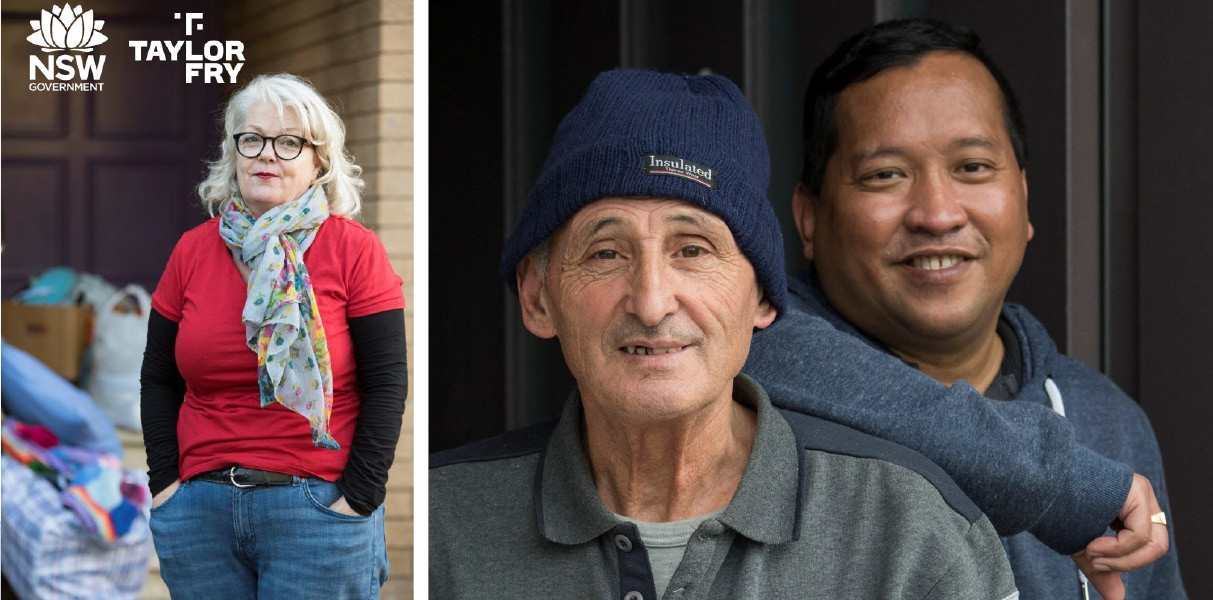Pathways to Homelessness offers insights for government


The NSW Department of Communities and Justice has released Taylor Fry’s report, Pathways to Homelessness, investigating what happens to people before, during and after homelessness.
In authoring the report, Taylor Fry Principal Dr Hugh Miller and Director Dr Laura Dixie together created one of the most comprehensive linked datasets related to homelessness in Australia.
Covering more than 625,000 people across 19 NSW and Commonwealth services – including housing, health, welfare, justice, education and out-of-home care – the dataset is large enough to be able to meaningfully analyse homelessness risk across the entire NSW population.
Hugh and Laura’s work will help the Department understand people’s experiences, and inform investment decisions focused on prevention and early intervention programs. These are aimed at improving the way services respond to people experiencing homelessness, as well as the outcomes of those at risk of homelessness across the whole service system.

The report identifies patterns in people's government service use to help inform intervention policy
Key findings of their Pathways to Homelessness report identify patterns in how people interact with specialist homelessness services (SHS). For example, domestic and family violence support as the most commonly required specialist support sought by people accessing SHS at 23 per cent (this group is also most likely to be female with children), followed by mental health support at 14 per cent, family support at 12 per cent and legal support at 10 per cent.
Hugh and Laura’s main predictive model also shows that 32 per cent of homelessness presentations can be attributed to 1 per cent of the NSW population, and this 1 per cent higher-risk group is more than 30 times more likely to access homelessness services in the next year than the general population. First Nations people are overrepresented in this higher-risk group, with 30 per cent of those who access SHS identifying as First Nations people.
For young people leaving out-of-home care, previous homelessness, walk-in mental health service use and court appearances, including Youth Justice Centres and police cautions, are all predictive of increased risk of later accessing homelessness services. If they have already accessed SHS before leaving care for the final time, they have a 91 per cent chance of experiencing repeated homelessness.
Other patterns to emerge over the six years of homelessness services data used for the analysis, from 2011 to 2017, highlight that people accessing SHS often use other government services at more than 10 times the rate of the broader population. They are 24 times more likely to be in controlled drug treatment and 10 times more likely to appear in court. One in eight people leaving custody access homelessness services within a year – 20 times the rate of the wider NSW population. The rate for First Nations people is double that for non-First Nations people.
The findings in Pathways to Homelessness also support key initiatives to deliver the NSW Government’s goal to halve street homelessness by 2025, including those with a focus on people exiting government services such as social housing, health facilities and correctional centres.
To read the report in full, download it here
Other articles by
Hugh Miller
Other articles by Hugh Miller
More articles

NSW Department of Communities and Justice releases Taylor Fry report
Taylor Fry’s findings and recommendations in a report for the NSW Government evaluating a key initiative to improve lives
Read Article

Well, that generative AI thing got real pretty quickly
Six months ago, the world seemed to stop and take notice of generative AI. Hugh Miller sorts through the hype and fears to find clarity.
Read Article
Recent articles
Recent articles
More articles

Taylor Fry boosts climate expertise
Climate and financial risk specialist Dr Ramona Meyricke rejoins our ranks to lead our climate practice, as we focus on meaningful solutions
Read Article

LA wildfires – implications for the upcoming Australian reinsurance renewals
What are the flow-on effects of the January LA wildfires in Australia?
Read Article





